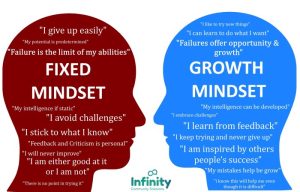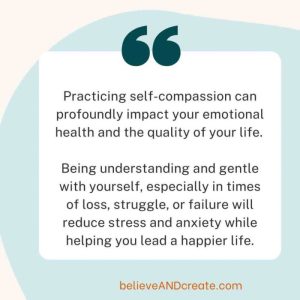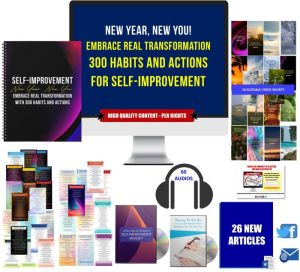Employee Assistance Programs for Mental Health

Employee assistance programs for mental health are increasingly vital in today’s workplaces. These programs offer a crucial lifeline for employees facing mental health challenges, providing confidential support and resources to navigate stress, anxiety, depression, and other issues. By offering a range of services, from counseling and therapy to stress management techniques and mindfulness practices, EAPs aim to foster a healthier, more productive, and supportive work environment.
The impact extends beyond individual well-being, contributing to increased employee retention, reduced absenteeism, and improved overall organizational performance.
The effectiveness of EAPs hinges on their accessibility, the breadth of services provided, and the integration of these services into the overall workplace culture. Successful programs actively promote awareness, reduce stigma surrounding mental health, and empower employees to prioritize their well-being. This proactive approach not only benefits individual employees but strengthens the organization as a whole.
Stress and Anxiety Management within EAPs
Employee Assistance Programs (EAPs) increasingly recognize the significant impact workplace stress and anxiety have on employee well-being and productivity. Understanding the common sources of this stress and providing effective coping mechanisms are crucial components of a successful EAP. This section will explore the various stressors encountered in the workplace, the evidence-based techniques offered by EAPs to manage these challenges, and provide a practical guide for accessing these valuable resources.
Workplace stressors are multifaceted and can significantly impact mental health, leading to burnout, decreased productivity, and even physical health problems. Common sources include demanding workloads, long working hours, work-life imbalance, lack of control over one’s work, insufficient resources, interpersonal conflicts, and fear of job insecurity. The cumulative effect of these stressors can manifest as anxiety, depression, and other mental health concerns, negatively impacting both the individual and the organization.
Evidence-Based Stress and Anxiety Management Techniques
EAPs typically offer a range of evidence-based techniques to help employees manage stress and anxiety. These interventions are often tailored to individual needs and preferences and may include Cognitive Behavioral Therapy (CBT), mindfulness-based stress reduction (MBSR), relaxation techniques such as progressive muscle relaxation and deep breathing exercises, and biofeedback. CBT helps individuals identify and challenge negative thought patterns and behaviors contributing to stress and anxiety, while MBSR cultivates present moment awareness to reduce overthinking and worry.
Relaxation techniques provide immediate stress relief by reducing physiological arousal, and biofeedback offers a way to gain control over bodily responses to stress.
Real-World Examples of EAP Interventions for Stress Reduction
One example of a successful EAP intervention involved a manager experiencing significant burnout due to excessive workload and team conflicts. The EAP provided individual CBT sessions to help the manager develop coping strategies for managing stress and improve communication skills to resolve team conflicts. This intervention resulted in a noticeable improvement in the manager’s well-being and overall job performance.
In another case, a group of employees experiencing high levels of anxiety related to a company restructuring benefited from a series of workshops focused on mindfulness and relaxation techniques offered through the EAP. These workshops equipped employees with practical tools to manage their anxiety and navigate the uncertainty associated with the restructuring.
Accessing Stress Management Resources Through Your EAP
Accessing the stress management resources available through your EAP is typically a straightforward process.
- Identify your EAP contact information: This information is usually provided in your employee handbook or through your HR department.
- Contact the EAP: Reach out to the EAP via phone, email, or online portal, depending on the options available.
- Describe your needs: Briefly explain your situation and express your interest in stress management resources.
- Schedule an appointment: The EAP will help you schedule an initial consultation to discuss your needs and develop a personalized plan.
- Participate in the program: Engage actively in the recommended interventions, whether it’s individual therapy, group workshops, or online resources.
Mindfulness Practices and EAPs

Mindfulness, the practice of paying attention to the present moment without judgment, offers significant benefits for mental well-being, particularly within the often-stressful context of the workplace. Integrating mindfulness techniques into Employee Assistance Programs (EAPs) can provide employees with valuable tools to manage stress, improve focus, and enhance overall mental health. This section explores the applications of mindfulness within EAPs, providing practical examples and guidance.
The benefits of mindfulness for mental well-being in the workplace are substantial. By cultivating present moment awareness, employees can reduce stress and anxiety levels, improve emotional regulation, and enhance their ability to cope with workplace challenges. This leads to increased productivity, improved focus, and a greater sense of overall well-being, ultimately contributing to a healthier and more positive work environment.
Studies have shown a correlation between regular mindfulness practice and reduced symptoms of depression and anxiety.
A Guided Mindfulness Meditation Script, Employee assistance programs for mental health
This script is designed for use in an EAP setting, guiding participants through a brief mindfulness meditation exercise. It emphasizes a non-judgmental approach to observing thoughts and sensations.
(Begin with calming music playing softly in the background)
Find a comfortable position, either sitting or lying down. Close your eyes gently. Bring your attention to your breath, noticing the sensation of the air entering and leaving your body. Don’t try to change your breath; simply observe it. Notice the rise and fall of your chest or abdomen. If your mind wanders, which it inevitably will, gently guide your attention back to your breath. Acknowledge any thoughts or feelings that arise without judgment. Simply observe them as they pass, like clouds drifting across the sky. Now, bring your attention to the sensations in your body. Notice any tension or discomfort, and simply acknowledge it without trying to change it. Feel the weight of your body against the surface beneath you. Continue to focus on your breath and body sensations for a few more moments. When you’re ready, gently bring your awareness back to the room. Take a few deep breaths, and slowly open your eyes.
Integrating Mindfulness into Daily Work Routines
Mindfulness doesn’t require extensive time commitments; even short, regular practices can yield significant benefits. Here are some ways to integrate mindfulness techniques into the daily work routine:
- Mindful Breaks: Take short breaks throughout the day to focus on your breath and body sensations. Even 5 minutes can make a difference.
- Mindful Movement: Incorporate mindful stretching or walking during breaks to reduce physical tension and improve focus.
- Mindful Communication: Practice active listening during meetings and conversations, paying attention to both verbal and non-verbal cues.
- Mindful Task Completion: Focus fully on one task at a time, avoiding multitasking. This enhances concentration and reduces stress.
Comparison of Mindfulness Practices in EAP Programs
Different mindfulness practices offer unique benefits and can be tailored to suit individual needs within an EAP setting. The following table compares several common practices and their applications:
| Mindfulness Practice | Description | EAP Application | Benefits |
|---|---|---|---|
| Mindful Breathing | Focusing on the sensation of breath | Stress reduction, anxiety management | Calming, grounding, improved focus |
| Body Scan Meditation | Bringing awareness to different parts of the body | Reducing physical tension, promoting relaxation | Increased body awareness, stress relief |
| Walking Meditation | Paying attention to the sensations of walking | Stress reduction, improving presence | Grounding, improved mood, increased awareness |
| Loving-Kindness Meditation | Cultivating feelings of compassion and kindness | Improving emotional regulation, reducing negativity | Increased empathy, improved self-esteem |
Mental Health Advocacy and EAPs: Employee Assistance Programs For Mental Health

Employee Assistance Programs (EAPs) play a crucial role beyond simply providing counseling services. They serve as vital advocates for mental health within organizations, actively working to foster a culture of understanding, support, and reduced stigma surrounding mental wellbeing. By implementing proactive strategies and initiatives, EAPs can significantly impact employee mental health and overall workplace productivity.EAPs promote mental health awareness through various channels, aiming to destigmatize mental health concerns and encourage help-seeking behavior.
This involves educating employees about available resources, normalizing conversations about mental health, and showcasing success stories of individuals who have benefited from EAP services. By creating a safe and open environment, EAPs help employees feel comfortable discussing their mental health challenges without fear of judgment or repercussions.
Successful Mental Health Advocacy Initiatives
Effective mental health advocacy within organizations often involves a multifaceted approach. One successful strategy is the implementation of regular mental health awareness campaigns. These campaigns could involve workshops, webinars, or presentations featuring mental health professionals who discuss common mental health challenges, coping mechanisms, and available resources. Another impactful approach is the creation of employee resource groups focused on mental health.
These groups provide a supportive community for employees to connect, share experiences, and advocate for improved mental health support within the organization. For instance, a company might establish a peer support network where trained employees offer confidential listening and support to colleagues. A further example is a company-wide mental health day, allowing employees dedicated time for self-care and reflection.
These initiatives, often supported and facilitated by the EAP, demonstrably improve employee well-being and foster a more supportive work environment.
Strategies for Building a Supportive Workplace Culture
Building a supportive and inclusive workplace culture requires a commitment from leadership and a collaborative effort across the organization. This involves implementing policies that prioritize mental health, such as flexible work arrangements and generous paid time off for mental health appointments. Regular training for managers and supervisors on recognizing signs of mental health distress and providing appropriate support is essential.
This training equips managers to handle sensitive situations with empathy and to guide employees towards accessing available resources like the EAP. Open communication is also key; leaders should actively communicate the organization’s commitment to mental health and regularly reinforce the importance of seeking help when needed. Celebrating employee achievements and fostering a positive work-life balance also contribute to a healthier and more supportive environment.
For example, a company might implement a wellness program that includes stress-reduction activities and promotes healthy lifestyle choices.
Communication Plan for Promoting EAP Mental Health Services
A robust communication plan is critical for ensuring employees are aware of and utilize EAP services. This plan should involve multiple communication channels to reach a diverse workforce. Initial communication should focus on clearly explaining what the EAP is, the services offered, and how to access them. This could involve email announcements, posters in common areas, and inclusion in the employee handbook.
Regular reminders and updates on EAP services should be included in internal newsletters or company intranet platforms. Consider incorporating stories and testimonials from employees who have benefited from EAP services to build trust and demonstrate the program’s value. Finally, leadership should actively promote the EAP and encourage its utilization. For example, a company CEO could share their personal support for the program in a company-wide meeting, demonstrating leadership commitment to employee well-being.
This multi-pronged approach ensures that employees are consistently informed about the support available to them.
In conclusion, employee assistance programs represent a significant investment in the well-being of the workforce. By offering comprehensive mental health support, EAPs contribute to a healthier, more productive, and supportive work environment. The multifaceted approach, encompassing therapy, stress management, mindfulness, and resilience-building techniques, empowers employees to navigate workplace challenges and prioritize their mental health. Investing in effective EAPs is not merely a matter of compliance; it’s a strategic decision that fosters a thriving and engaged workforce.
FAQ Summary
What if my EAP doesn’t offer the specific type of therapy I need?
Many EAPs have networks of providers and can assist in finding appropriate external resources, even if they don’t directly offer the specific therapy you need.
Is information shared with my employer through the EAP confidential?
The level of confidentiality varies depending on the EAP and the specific services utilized. However, most EAPs maintain strict confidentiality, sharing only minimal information with the employer, usually limited to confirming participation in the program.
How do I access my company’s EAP?
Contact your Human Resources department or refer to your employee handbook for details on accessing your company’s EAP. Information such as a phone number or website is usually provided.
Are EAP services covered by my health insurance?
Coverage depends on your specific health insurance plan. Some plans may cover EAP services, while others may not. Check with your insurance provider for details.




